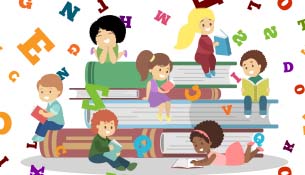
A recent headline in the Houston Chronicle was “Texas dyslexia rate jumps as awareness grows”. According to Elizabeth Sandler’s report the number of children with dyslexia in Texas identified between 2017 and 2021 increased from 3% to 5 %. Houston ISD is now up to 2.4 % identified dyslexics. The Yale Center for Dyslexia & Creativity says that dyslexia affects 20 % of the population.
Most people reading this have heard of, or read about, dyslexia but questions remains about what we understand about dyslexia. Looking at the word itself the Merriam-Webster dictionary states that “dys’ means abnormal or difficult or impaired. “Lexia” means words. Knowing what these two parts of the word give us some understanding of what it means but it is clear that most professionals in varying fields, including education and medicine, have developed separate languages to understand, diagnose, and treat this “difficulty with words”. Many of us become “dyslexic” when trying to understand the language of another professional field.
Some definitions concerning this specific learning disability are as follows: apraxia = children having trouble saying sounds, syllables and words. This is not due to muscle weakness but the brain’s planning process to move the body parts needed for speech; articulation disorder = a problem coordinating the movement of the lips, tongue, mouth and throat to make correct speech; phonics = understanding the relationship between written letters and corresponding sounds; decoding = the ability to use letter-sound relationship to translate a written word into the spoken word; pragmatics = using rules governing the social use of language such as requesting, greeting, describing or adjusting the words used based on the listener’s knowledge or age or the give and take of conversation.
Above is just five words trying to define problems with language particularly the problem of using symbols to represent sounds, using those sounds to make words, learning to spell, write and comprehend those sounds. This complex process is broken down into five common types of dyslexia: phonological dyslexia (difficulty learning sounds made by letters, difficulty sounding out words, spelling, spelling the same word different ways on the same page, slow reading, difficulty recognizing familiar words in new context), rapid naming dyslexia (difficulty rapidly naming colors, numbers and letters, difficulty retrieving words, slow to respond orally, making nonsense words in place of real words, using gestures in place of words), double deficit dyslexic (most severe with problems with speed and sounding out words), surface dyslexia (can sound out words but fail to recognize familiar words by sight), and visual dyslexia (requires the brain to remember the correct letter sequence or shape causing problems with focusing on the text, tracking across the lines or keeping their place).
Having a specific learning disability in learning to read is not because of low intelligence or being biliingual but does hurt school performance and consequently hurts the students’ self-esteem. If recognized early there are specific teaching techniques that can help. Don’t hesitate to advocate and to push for your child.